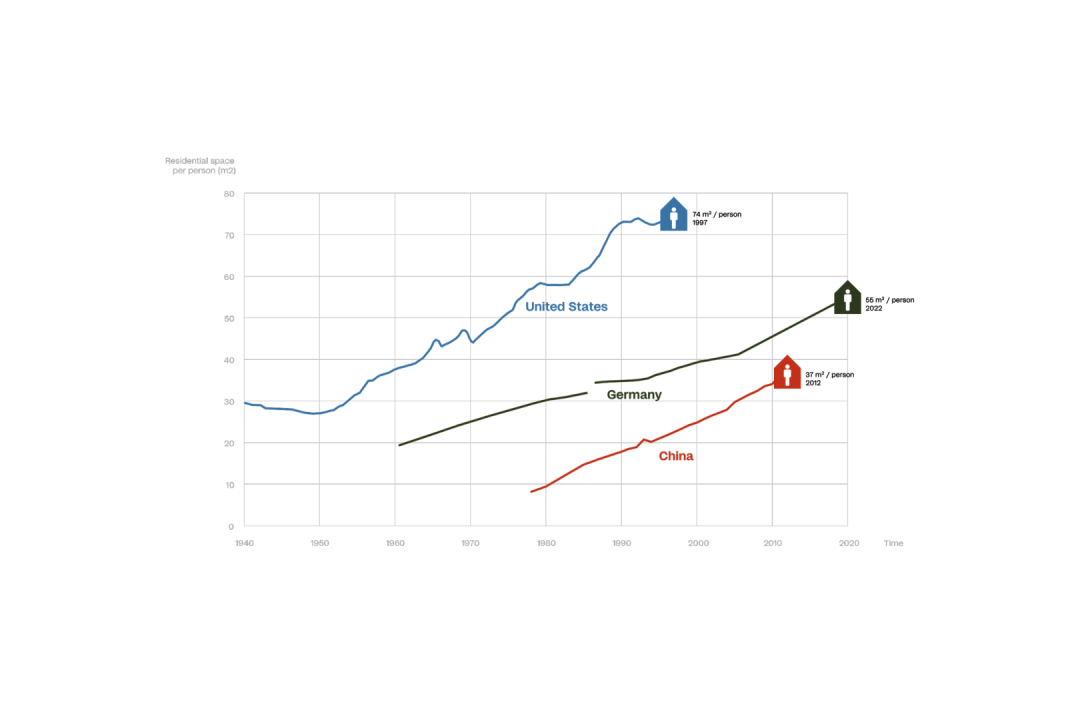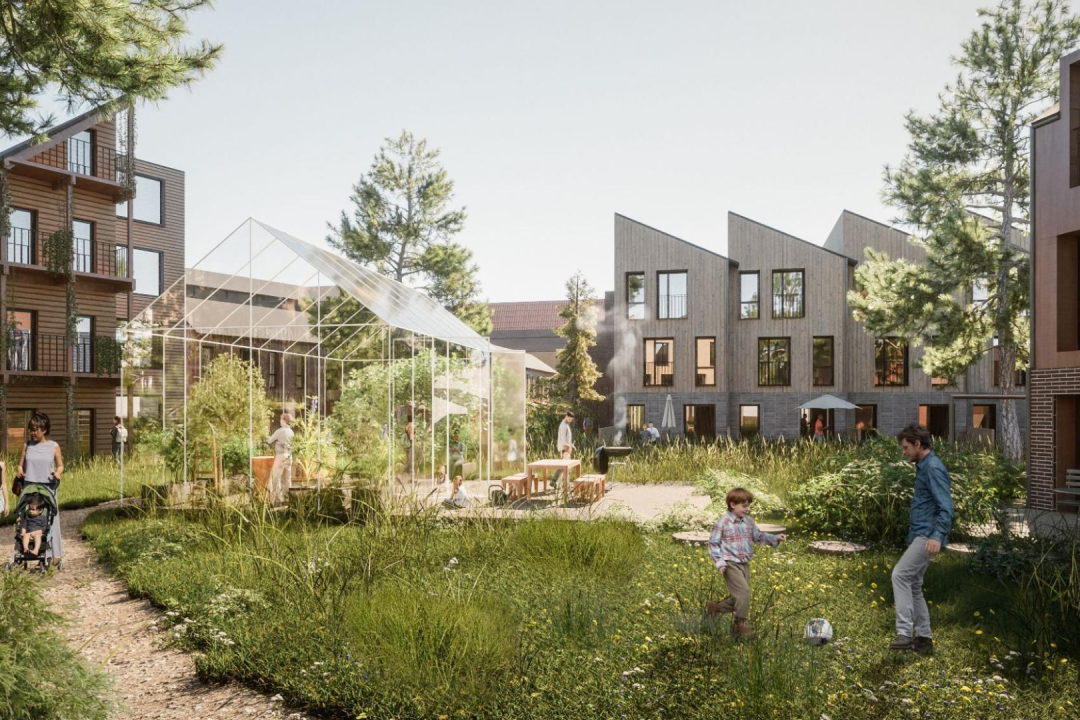
The Key to Solving Emissions Is Close to Home
Gehl’s Mads Kjær Ravn advocates for a rethink of our spatial consumption.

Illustration: Gehl for their plan for the Favrholm neighborhood
Cities are home to more than half the world’s population — and responsible for around 70% of global carbon emissions. But even as the world keeps urbanizing, our consumption of space keeps increasing. What used to be luxurious, extravagant amounts of space are now seen as aspirational; guest rooms and spacious walk-in closets are seen as standard in new suburban construction, and most cities have a surplus of underused offices. All of these additional spaces consume energy for heating, cooling, and lighting, and are constructed using tons of materials that also represent carbon emitted to the atmosphere.

Historical increase in floor space. Data: US: U.S. Bureau of the Census and National Association of Homebuilders. Germany: German System of Social Indicators (ISI). China: National Bureau of Statistics of China.
With the introduction of new technologies and materials, we may be able to reduce some of these harmful impacts and decrease the negative impacts per unit of floor space. But the real leverage in terms of lowering carbon emissions comes from decreasing the amount of space that each person consumes. However, blindly optimizing for less floor area per person does not lead to livable cities. At Gehl, we investigate how to design cities where a smaller amount of space per person doesn’t mean forfeiting mental health, social capital, or support for daily life.
From density stress to density joy
What if having less space actually made life richer? What would it take to make a neighborhood where living within a smaller footprint felt joyful and not like a sacrifice?
We spend a lot of time studying neighborhoods to design around the joys of density: access to the offers of the city within a short distance, the feeling of being part of a community, the bustle of daily life while also being able to enjoy a quiet moment.
Our framework for neighborhood completeness is a starting point for many projects. When a city contains the full spectrum of offers needed for daily life within walking distance, people begin to use the city as their extended living room, enabling them to live within a smaller footprint.

Example of how a neighborhood and its immediate 15-minute walking radius is evaluated. From Gehl’s work with SPUR in San José
Leveraging the power of shared living
One of the most undervalued joys of living compactly is the potential for sharing. By exchanging a tiny part of each person’s private floor area, it’s possible to add shared spaces with massive amenity value. Many neighborhoods have shared amenities like gyms or laundries, but they are often underutilized because they were never designed to be social spaces.
In our planning projects, we often ask: What if shared amenities made for shared experiences? We start with public life and shared spaces first, designing them differently than traditional categories of “residential” or “commercial.”
For example, instead of planning for private guest rooms and home offices, what if each city block had a few extra rooms and a flexible space that could be used for remote working during the day and community events after hours?

In our plan for the Favrholm neighborhood, all residential courtyards contain shared spaces such as greenhouses that can be used by residents to host birthday parties or communal dinners. Illustration: Gehl
Reducing urban emissions on a global scale
Small acts, when multiplied by enough people, can truly change the world. Rethinking our spatial consumption is relatively simple at the scale of each urban resident and their neighborhood. Cities are expected to have more than 5 billion inhabitants by 2030 and have the kind of scale needed to massively lower emissions while simultaneously raising quality of life.
Measuring how much space each person consumes is critical, but we have to design with behavior in mind. Shared spaces will only work at scale if they make us feel richer even as we use less.
Mads Kjær is a Project Manager at urban design and planning consultancy Gehl.